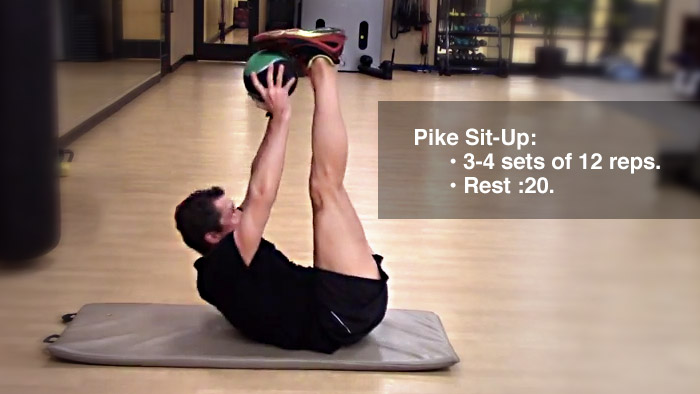This is the third installment in our 4-part series, “Year-Round Strength Training for Triathletes. Read Part 1: Off-Season Stabilization and Part 2: Muscular Endurance.
The previous two phases of the off-season strength training series were designed to establish a foundation upon which we can increase loads and demands on the body in this Heavy Weight Training/Reactive Phase (HWT). This phase should last between 5-8 weeks.
It’s important that the athlete has developed sound movement patterns and has adequately prepared their systems to tolerate the loads and exercises that will be described in this article. I would strongly discourage an athlete from going through this HWT phase without first having done some preparatory work similar to that illustrated over the first two phases.
Goals of the Heavy Weight Training Phase
- Activate high-threshold motor units. Muscle and muscle fiber is activated through the innervation of a motor unit—the conduit through which a signal from the central nervous system activates the muscle to contract. Heavier loads activate higher threshold motor units enabling the system to overcome more significant loads.
- Increase what is called rate coding and motor unit synchronization (rate of force development). Muscle force is greater when more motor units are involved and the firing rate is more rapid1.
- Enhance the speed and efficiency with which the body is able to receive and redirect ground reaction forces.
- Promote favorable adaptations in muscle fiber typing, promoting the production and utilization of more intermediate and fast-twitch fibers, while maintaining the same amount of slow-twitch/oxidative fibers.
- Produce an anabolic hormonal response. Anabolic hormones promote tissue building and include testosterone, insulin, insulin-like growth factor, and human growth hormone.
- Enhance anaerobic metabolism. The vast majority of endurance training utilizes aerobic metabolism with the presence of oxygen. Here most of the metabolism will be anaerobic which can improve substrate (glycogen, fat, or protein) utilization and metabolic functioning.
Why Strength Train as a Triathlete?
A common tendency I have observed over the years is that athletes tend to omit or skip strength sessions in lieu of a swim, bike or run. But we must remember that there is a law of diminishing returns and ask ourselves, which will be more beneficial? Another endurance session, or a strength session which has been shown to improve performance in a multitude of studies? The literature seems to speak for itself. Strength training makes the body more durable and less prone to injury, it promotes range of motion, and significantly improves economy of movement and time to exhaustion among a host of other physiological and neuro-muscular benefits.
One such benefit is illustrated by William Kraemer et al. (1995), who found that aerobic endurance training alone leads to muscle degradation and reduced power output as a result of the predominantly catabolic environment created through endurance training alone. It’s been shown that endurance athletes have higher levels of cortisol (and other catabolic agents) and reduced levels of testosterone. Conversely, it’s been demonstrated that the addition of strength training in conjunction with endurance training reduces the amount of cortisol and increases the amount of testosterone and other anabolic hormones, thereby blunting the catabolic effect and promoting recovery while retaining muscle mass and force production capabilities.
As discussed in the second installment of this series, several studies have shown that the addition of strength training to an endurance training program in well-trained runners enhances performance by improving running economy by 5% and time to time exhaustion at lactate threshold velocity by 21.3%2. Similar results have been demonstrated in well-trained cyclists. Jan Hoff et al. (2010) found a 17.2% increase in time to exhaustion at maximal aerobic power among the strength group and 4-7% increases in other measures of cycling economy, which is in line with similar studies done with runners who concurrently strength and endurance train3.
The participants in these and similar studies utilized either heavy weight-low repetition schemes or plyometric protocols both with significant rest intervals between sets. Here we will be combining elements of plyometric/ballistic training with heavy weight training so that we can achieve the adaptive responses of both modalities. It will be important to take longer rest between the sets than in past phases, as the loads are more demanding. In this phase we must fight the urge to organize the workout as a “circuit”, which is more aerobic in nature. Instead, we want the anaerobic benefits that come with combination of load with adequate rest between sets. This strength phase is organized by grouping a strength pattern with a more explosive pattern in a series of “super sets”. Again, we get plenty of aerobic training with the swim, bike, run; not taking enough rest between these sets will just make the athlete tired and miss the objective.
Rules of the HWT/Reactive Phase
- The athlete must be warmed up, with the system primed for movement.
- The loads should generally be between 85-100% of 5 repetition max (heavy).
- Because the loads are significant, the athlete should rest 1:30-3:00 min between sets. Again, often the tendency of endurance athletes is to move through the exercises with less rest. This is not an aerobic workout and longer rest intervals are necessary.
- We always want to maintain alignment of the hip, knee and ankle.
- It’s important to have the weight and tension evenly distributed per limb and hemisphere, always striving for symmetry during any exercise.
- Whenever possible, draw the navel towards the spine to stabilize the hip and the trunk.
- Make sure to inhale (typically on the deceleration phase) and exhale on the contraction. This respiratory exchange is important to oxygenate the blood and tissues as well as establish a smooth rhythm.
- Never lift more than you can safely and effectively, with good control throughout all phases of the lift. Always exercise good judgment and err on the side of conservatism.
The Workout
Here’s a HWT Phase workout, along with a playlist of instructional videos.
1. Your dynamic warmup is the Open Gate/Close Gate exercise. Do 3 sets of 8-12 reps. Don’t force the range of motion here. Rest :20-:40 between sets of this pattern.
2A. Split Squat: For set #1, warm up with 8-10 reps. Sets 2-4 are 5-8 reps. Stack this with 2B.
2B. Depth Jump/Box Jump: Do 8 repetitions. Rest 2:00-3:00 between exercise 2A and 2B each time.
*If we need a regression, see just “Depth Jump” on my YouTube channel. It is a slight regression from 2B.
3. Barbell Bent Row: 3 sets of 6-8 reps. Keep the chest tall and push the butt back. Rest :20.
3A. Plank-Row-Rotate-Press: 3 sets of 8 reps. Really accelerate the dumbbell towards the chest fast, then send it quickly towards the ceiling. The last phase is mostly just redirecting the force. Rest 1:30-3:00 before back to 3.
4. Pike Sit-Up: 3-4 sets of 12 reps. Rest :20.
4A: Sit up Get Up: 3-4 sets of 8 reps. This requires explosive movement and a quick :02-:04 break between each rep. Make sure you sit up under the dumbbell nice and tall under the arms. Rest 1:30-3:00 between sets.
5. OPTIONAL: This workout can be long so feel free to omit this pattern, I just wanted to add some type of “pushing” pattern for the upper body. This is the point in the workout where we run the risk of just making you tired unnecessarily. Chest Plyometric: 3 sets of 8 reps if you are able. Rest 1:30-3:00 between each rep. Those of you unable to perform the movement should start out on the knees.
Questions? Please don’t hesitate to contact me on my website or on Twitter @shaneniemeyer. It’s important to talk through any questions should they arise. Remember, there is no one right way.
References
Haff, G.G. & Triplett, N.T. (Eds.). (2021, June 21). Essentials of Strength Training and Conditioning (3rd Ed.). Human Kinetics.
Støren, O. et al. (2008, June). Maximal strength training improves running economy in distance runners. Retrieved from https://pubmed.ncbi.nlm.nih.gov/18460997/
Sunde, A. et al. (2009, October). Maximal Strength Training Improves Cycling Economy in Competitive Cyclists. Retrieved from https://www.researchgate.net/publication/38034737_Maximal_Strength_Training_Improves_Cycling_Economy_in_Competitive_Cyclists


